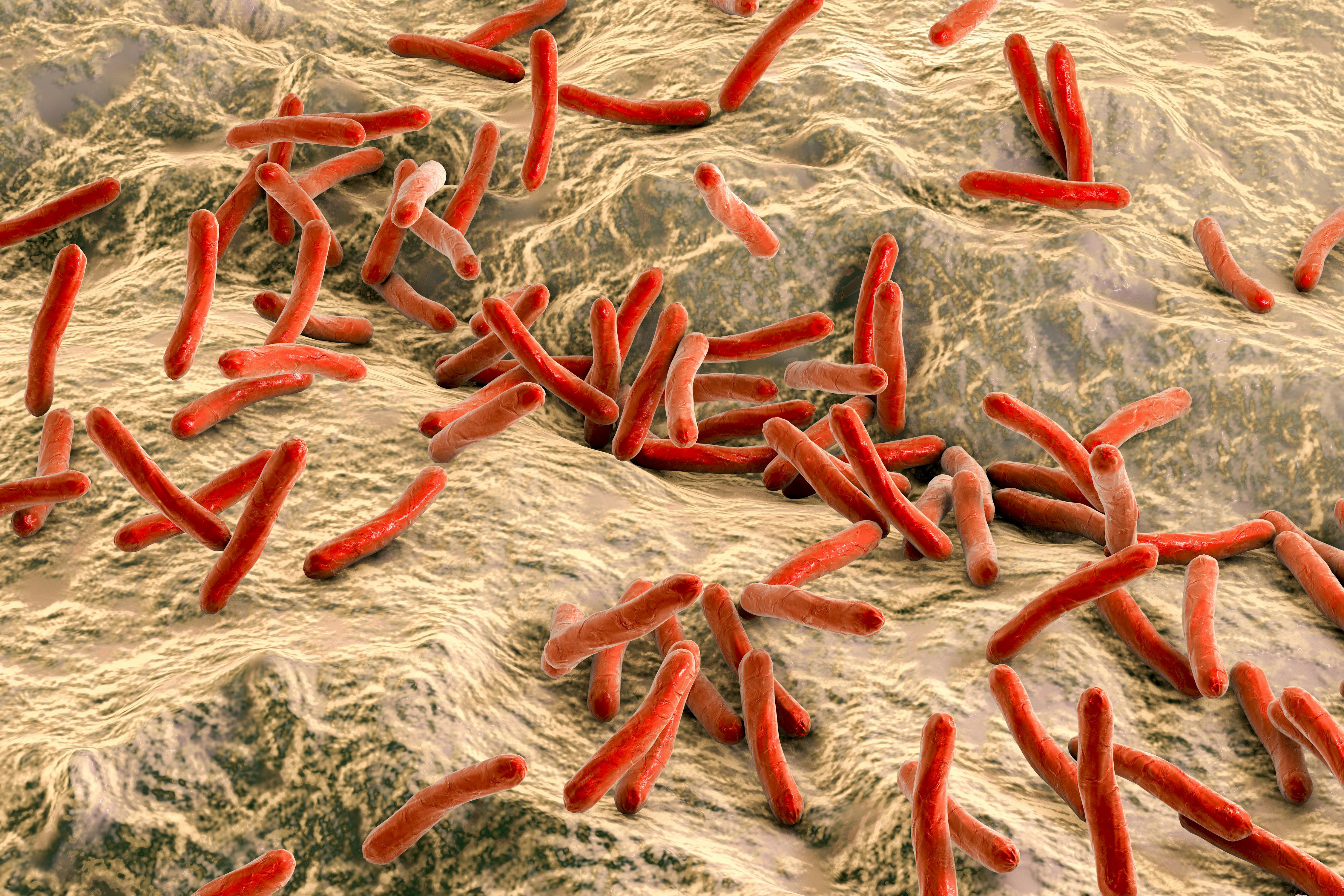
Among all the infamous ancient diseases cropping up in human history, leprosy is perhaps second only to the plague. The chronic infection ravaged the bodies of its victims, causing skin lesions and loss of limbs much like House of the Dragon’s Viserys Targaryen who actor Paddy Considine revealed had a severe form of leprosy, which wasn’t explicitly stated in the show. But unlike in fiction, infected individuals in our real world were often ostracized by society and forced to quarantine for life in leper colonies. The last such colony was dismantled as late as 1969.
Today, leprosy is known as Hansen’s disease and researchers now know that the culprit behind it is a bacterium called Mycobacterium leprae, or M. leprae. In the 1960s, scientists developed antibiotics that thwart the microorganism’s destructive tendencies. Now, they’ve discovered a far gentler, daresay nurturing side that we could potentially harness for the greater good.
Published this month in the journal Cell Reports Medicine, researchers at the University of Edinburgh found that M. leprae rejuvenated livers, coaxing these organs to grow dramatically but also without any scarring or triggering tumor growth in armadillos infected with the bacteria.
“We have known [for a long time] that the liver will regenerate after injury,” biologist Udayan Apte, associate director of the University of Kansas Liver Center, tells Inverse. “We know now [from this study] that there is a way to get the liver to grow without having injury if we can rewire some of the circuitry.”
Here’s the background — The human liver is amazingly resilient, capable of bouncing back from damage incurred from substances like alcohol or even sometimes in the event of an acetaminophen overdose. A liver can regrow to its normal size even after 70 percent of it has been removed, which in humans can take a couple of months. And the organ typically, likes to keep its size to around five percent of our body weight. (Some studies found liver size can even fluctuate during the day likely due to circadian rhythms.)

However, there are limits to this hepatic invincibility, says Apte. Whenever there is tissue loss, there’s also loss of function and there are diseases like severe cirrhosis, cancer, and hepatitis that can seriously aggravate this loss of function. While studies looking into how to regrow and regain liver function are tinkering with stem cells, it’s not yet clear how to coax stem cells into regenerating a liver, such as which genes to turn on or off or other cellular factors involved.
How they did it — In 2013, researchers at the University of Edinburgh led by microbiologist Anura Rambukkana, who also led this new study, found that M. leprae could genetically reprogram adult Schwann cells — cells in the nervous system that make the insulation wrapping around neurons — into cells resembling stem cells that lay the foundation for the liver’s (and many other tissues in the body) overall architecture, essentially turning back the genetic clock.
Building off of that earlier research, Rambukkana and his colleagues wanted to see how M. leprae affected the armadillo since the cute, roly-poly mammal is naturally infected with the bacterium. In particular, the researchers used the nine-banded armadillo since this animal has an unusual yet helpful characteristic: It always gives birth to genetically identical quadripulets, essentially clones of each other. The researchers took 32 animals and infected them for 10 to 30 months, comparing their livers to 13 nine-banded armadilloes resistant to M. leprae and 12 controls that weren’t infected.
What they found — While infected armadilloes had high levels of the leprosy-causing bacterium in their livers, surprisingly, the immune system wasn’t on high alert. Considering that and the fact the animals had larger livers compared to the other two groups, this suggested the enlargement wasn’t due to something like inflammation or any other immune response but something else.
That something else, it turned out when the researchers took samples from the infected animals, were livers cells growing. Not in size, but in actual numbers. Just as with the Schwann cell study, M. leprae appeared to be hacking into the genetic mainframe, deaging armadillo liver cells into cells that are youthful like stem cells. What was also remarkable as there were no signs of fibrosis (aka scarring), tumor growth, or other damage.

What’s next — While this study opens the doors to better understanding how liver and potentially whole-body tissue regeneration works in the body, there are still some unanswered questions, says Apte.
“The drawback or caveat of this finding is that [the] liver has millions and millions of cells,” he says. “[The researchers] show that liver function doesn’t change or [may] kind of improve over time as cells are being added. But it’s very possible that within the liver, certain cells are growing while other cells are keeping up the function. When those cells are done growing and become differentiated, others [may start growing]. There might be waves [of growth] and the study doesn’t look at.”
This is also in armadilloes, who don’t clear M. leprae infection as well as humans (around 95 percent versus 20 percent during natural infection). Apte says these findings don’t clearly delineate a mechanism for liver regeneration or how M. leprae’s is able to bypass immune detection, so it’s not clear whether those mechanisms involved will be the same for us.
“[Scientists] have a lot more research to do to figure out how exactly these bacteria treat the model of liver [regeneration],” says Apte.
But as the burden of liver disease weighs heavily on the world — approximately two million deaths per year — and liver transplants are hard to come by, hedging our bets on a leprosy-causing bacterium may come in handy. This doesn’t mean that if you want the strongest liver ever, you should shack up with some M. leprae. Please, definitely don’t do that.







